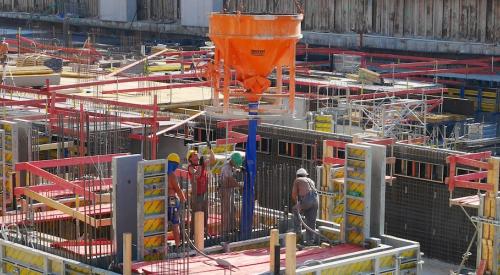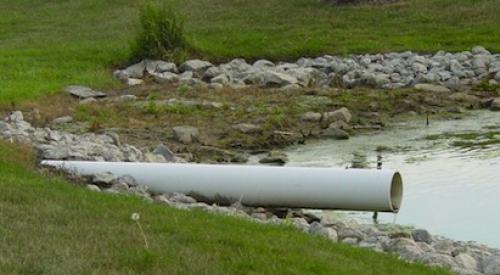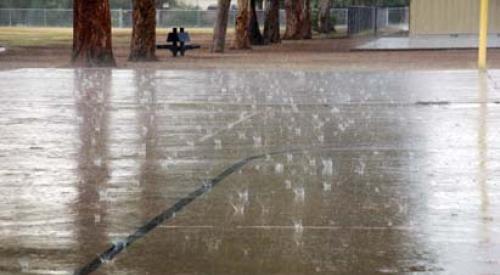My clients’ (successors in interest to distressed properties) most frequently asked question is: “Do we have to comply with the NPDES regulations if the project is dormant?”
Despite the fact that NPDES has been in effect since 1972 and the U.S. EPA Final Regulations Established stormwater permit application requirements for specified categories of industries on Nov. 16, 1990(1). there still exists some confusion for the people left holding the bag with distressed properties.
To help clear up the confusion, NPDES is part of the Federal Clean Water Act and is mandatory. Nearly all 50 states have been authorized by the U.S. Environmental Protection Agency to regulate their own stormwater programs (i.e., NPDES General Permit).(2) However, there are some states and outer-lying U.S. territories wherein the EPA regulates the NPDES General Permit and its rules and regs, such as Alaska, Idaho, New Hampshire, New Mexico, Massachusetts, Guam, and Puerto Rico.
There are also some instances where the state is the authority and then certain areas within the state fall under EPA jurisdiction (e.g., Indian countries and federal facilities). You should know that the only regulatory agencies that can grant any relief from the NPDES General Permit for Construction regulations are the EPA or the individual state agencies authorized by EPA to regulate their own NPDES Permit. The local agencies, cities and counties, parishes, etc., cannot supersede the state or federal agencies’ authority. Even if the local agency is okay with how you are maintaining your site and permit conditions, the state may not be.
With regard to the successor in interest scenario for financial institutions, in many cases the original loan underwriting team that performed the due diligence prior to providing loans for land development projects is long gone through many series of downsizing in personnel; receiverships often rely on new personnel not familiar with NPDES, and in the scenario of the developer that is still in business, often their remaining staff is not the former NPDES/SWPPP/stormwater experts they used to rely on to maintain their properties and projects in compliance.
In California, the permit standard conditions have changed, wherein existing dischargers that were covered under the previous General Permit needed to re-certify their properties prior to the effective date (July 1, 2010) of the new permit to maintain coverage under the former Permit requirements. New permittees are required to conduct a Risk Assessment for the Notice of Intent (NOI) to determine if the project is a Risk Level 1, 2 or 3, with 3 being the highest risk and requiring the greatest level of compliance standards, monitoring, sampling, etc. The state terminated all permits for properties that were not re-certified by the effective date of the new Permit. I recently experienced a situation with a lender as a successor in interest of foreclosed property in California that actually believed it could maneuver around the NPDES Notice of Intent (NOI) by filing a Notice of Termination (NOT) even though the property didn’t meet the State of California’s General Permit for Construction (effective July 1, 2010) NOT filing criteria and elected to avoid the cost of the preparation of the Risk Assessment & NOI and wait and see if the Waterboard accepts the NOT.
So, getting back to the original question: “Do we have to comply with the NPDES regulations if the project is dormant?” The simple answer is “YES!”
As successors in interest in foreclosed properties and the current legal owner (or as it is referred to by the California NPDES General Permit for Construction Activities the Legally Responsible Party (LRP)) you are obligated under the Permit Conditions to comply. Compliance with NPDES for construction sites with land disturbances over one acre doesn’t cease when the original permittee changes; either by the original permittee filing for bankruptcy, bank foreclosure, or land sales. As a side note, because of the state of the economy and the real estate market, the developer, receiver, or financial institution, are either reluctant to or simply do not have the funds to spend to maintain the properties in compliance with state and federal regulations; which doesn’t provide an excuse for non-compliance.
The bottom line is: Compliance is mandatory! You don’t have a choice. Your property has site specific conditions that may or may not allow you to file a NOT under the General Permit Conditions. Have your NPDES consultant verify with the appropriate regulatory agency having jurisdiction whether you must file a Notice of Intent or Notice of Termination of an existing Permit. The risk is too great. The penalties for non-compliance far outweigh the cost of a incurring a Notice of Violation. The penalties can be fines in tremendous magnitudes or imprisonment, or both. With the state and federal budgets in such distress, a project out of compliance is a red flag for the regulatory agencies and a prospective revenue stream to help fund their distressed budgets.
In my next blog, I’ll discuss the Penalties for Non-Compliance...
(1) Ref: State of California State Water Resources Control Board (Waterboard) National Pollutant Discharge Elimination System (NPDES) General Permit For Storm Water Discharges Associated With Construction And Land Disturbances Activities Order No. 2010-0014 DW2 NPDES No. CS000002, Order No. 2009-009-DWQ NPDES No. CAS 000002, Fact Sheet, I. Background, A. History (http://www.waterboards.ca.gov/water_issues/programs/stormwater/docs/constpermits/wqo_2009_0009_complete.pdf)
(2) Ref: United States Environmental Protection Agency (USEPA) http://cfpub.epa.gov/npdes/stormwater/authorizationstatus.cfm













